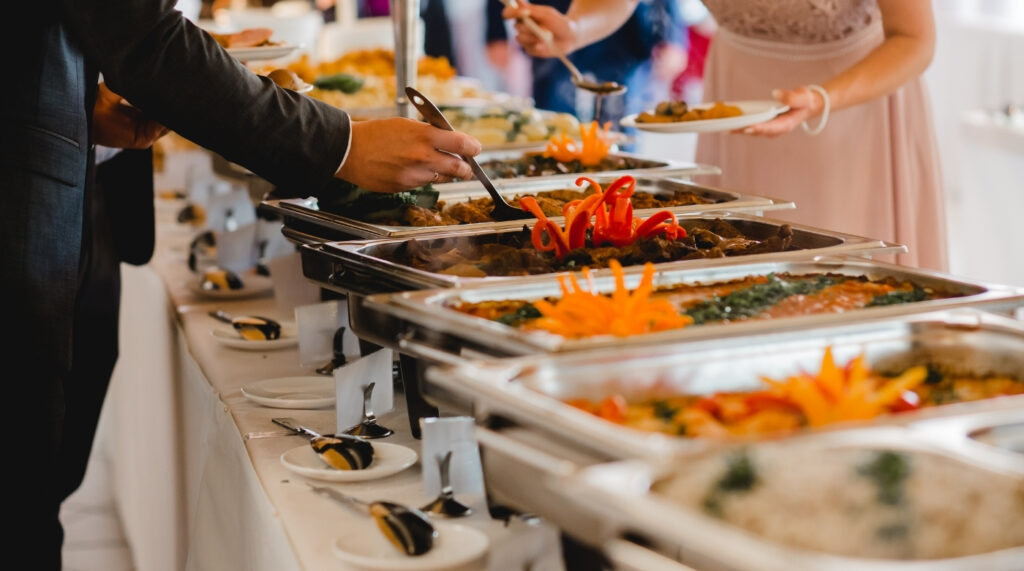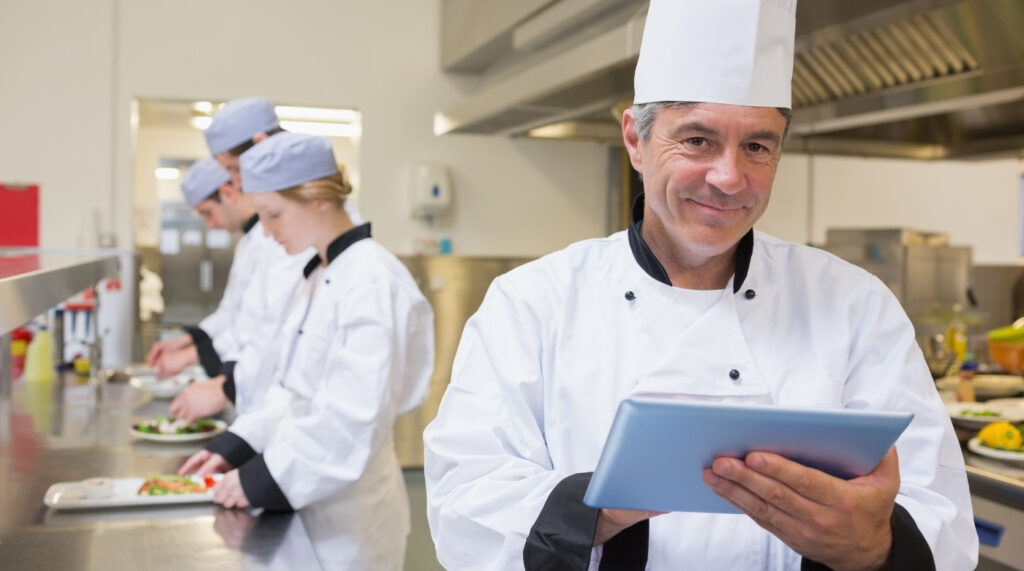The culinary world is dynamic, fast-paced, and incredibly rewarding for those with passion, discipline, and vision. Becoming a Chef—and eventually a Head Chef—is a dream for many food enthusiasts, but it requires more than just cooking skill. It takes an understanding of food hygiene, knowledge of food safety, leadership in catering operations, and a long-term commitment to professional growth.
If you’ve ever envisioned yourself commanding a busy kitchen, leading a team of dedicated cooks, and designing memorable dining experiences, this guide is for you. In today’s competitive hospitality industry, employers and clients are not just looking for creative culinary talent—they want professionals who can meet regulatory standards, manage teams, and deliver excellence under pressure.
This career blueprint will walk you through everything you need to know about becoming a successful Chef. You’ll learn about the various stages of culinary development, the importance of proper training in hygiene and safety, typical responsibilities, salary expectations, and the pathways that can take you from kitchen assistant to Head Chef.
What Does a Chef Really Do?
While a Chef is often romanticised as a culinary artist, the reality is that the role demands practical skill, technical knowledge, and strong leadership. Chefs are responsible not only for creating dishes but for ensuring the entire kitchen operates efficiently. Their duties encompass food preparation, team supervision, inventory control, compliance with food hygiene standards, and client satisfaction.
In professional environments—whether fine dining restaurants, hotels, or catering services—a Chef must blend creativity with structure. Daily tasks can range from planning menus and ordering ingredients to training junior staff and overseeing cooking operations. In larger establishments, chefs often specialise in areas like pastry, sauces, or grilling. However, the Head Chef, or Executive Chef, holds the highest authority, setting the tone and standard for the entire kitchen.
The Vital Importance of Food Hygiene and Food Safety
A top-tier Chef must understand and uphold the principles of food hygiene and food safety at all times. These are not just optional extras—they are legal and ethical requirements that protect customers and maintain a business’s reputation.
Food Hygiene
Food hygiene refers to the practices that prevent food contamination and ensure cleanliness during preparation. This includes:
- Personal cleanliness of staff
- Sanitising work surfaces and tools
- Proper storage and refrigeration
- Regular waste disposal
Neglecting food hygiene can result in the spread of harmful bacteria, leading to foodborne illnesses. For a professional Chef, understanding hygiene protocol is non-negotiable.
Food Safety
Food safety goes a step further, covering the broader regulatory systems that ensure food is safe to eat from farm to fork. It includes:
- Understanding food allergens and labelling
- Temperature control for perishable items
- Cooking food to safe internal temperatures
- Preventing cross-contamination
Compliance with food safety standards is especially important in catering, where chefs often prepare meals in one location and serve them in another. Maintaining integrity during transport, storage, and service is part of the professional’s responsibility.

The Modern Role of a Chef
A Chef is far more than just someone who prepares food. In the modern culinary world, chefs are leaders, managers, innovators, and safety experts. Their responsibilities extend well beyond cooking and plating. Chefs coordinate staff, plan menus, manage budgets, and ensure that food is prepared in accordance with legal food safety regulations and internal standards of food hygiene.
As kitchens evolve into fast-paced, high-tech environments, chefs must also be skilled communicators and problem-solvers. In larger establishments and hospitality chains, the Head Chef serves as the driving force of the kitchen—overseeing operations, maintaining food quality, mentoring junior staff, and ensuring customer satisfaction.
Common workplace environments for chefs include:
- Restaurants and fine dining establishments
- Hotels and resorts
- Hospitals and care homes
- Corporate dining facilities
- Cruise ships and private yachts
- Catering companies and events
Each environment has unique requirements, but all demand a professional who understands both the artistry of cuisine and the science of food safety.
Typical Work Environments for Chefs
Chefs can be found in a wide variety of professional settings. Each environment comes with its own pace, challenges, and required skills.
- Restaurants: Fast-paced and demanding. Focused on creativity, presentation, and guest satisfaction.
- Hotels: Requires standardisation and versatility, often catering to room service, events, and dining outlets.
- Catering Services: Flexible and event-focused. Chefs prepare meals off-site and must adapt to changing environments.
- Hospitals and Schools: Emphasise food safety, nutrition, and adherence to specific dietary guidelines.
- Cruise Ships and Airlines: Involves working with limited storage, preparing food at scale, and strict hygiene monitoring.
Qualifications and Certifications
While some chefs work their way up without formal education, most high-level positions require recognised certifications. Formal training not only builds core competencies but is also a strong signal of professionalism and commitment to employers.
Recommended qualifications include:
- Level 2 or 3 Certificate in Food Hygiene & Safety (required in most UK kitchens)
- City & Guilds NVQ Diplomas in Professional Cookery
- BTEC National Diploma in Hospitality
- Additional CPD Accredited Courses
Additional qualifications in hospitality management, inventory control, and leadership are valuable for those aspiring to executive kitchen roles.
Key Responsibilities in a Chef’s Career
From prep work to presentation, a professional Chef touches every aspect of the food creation process. As you progress toward senior positions like Head Chef, your role becomes increasingly managerial and strategic.
Here’s a breakdown of typical responsibilities:
| Area | Key Activities |
|---|---|
| Food Preparation | Chopping, marinating, baking, grilling, and plating food with precision |
| Food Hygiene | Cleaning workstations, managing stock rotation, and following HACCP guidelines |
| Food Safety | Monitoring temperatures, cross-contamination prevention, allergen control |
| Team Management | Delegating tasks, scheduling staff, resolving conflicts |
| Menu Planning | Creating dishes that align with brand identity and customer expectations |
| Kitchen Operations | Ordering supplies, managing waste, overseeing kitchen equipment use |
| Compliance & Audits | Ensuring local health department and food regulation standards are met |
It is essential for any aspiring Head Chef to have solid expertise in Food Hygiene, Food Safety, and Catering logistics. These skills are not only required by law in most countries but also form the backbone of any reputable culinary operation.

Career Roadmap: From Kitchen Assistant to Head Chef
The culinary career path typically follows a progressive structure, starting with basic support roles and leading up to senior management positions. Here’s a general overview:
| Career Stage | Typical Role | Focus |
|---|---|---|
| Entry-Level | Kitchen Assistant, Prep Cook | Learning kitchen procedures, assisting staff |
| Intermediate | Line Cook, Commis Chef | Mastering specific cooking stations |
| Mid-Level | Sous Chef, Chef de Partie | Supervising junior staff, managing shifts |
| Advanced | Head Chef, Executive Chef | Strategic planning, leadership, compliance |
| Specialisation | Catering Manager, Consultant Chef | Business operations, event coordination |
With the right combination of passion, experience, and education—including knowledge of food hygiene, food safety, and catering management—it’s possible to climb the ladder faster and secure a leadership position within a few years.
Salary Expectations Across Career Stages
Salaries in the culinary world can vary based on location, type of employer, and level of experience. However, well-trained chefs—especially those with expertise in Food Safety and Catering management—can command competitive pay.
| Role | UK Salary Range (2025 Estimate) |
|---|---|
| Commis Chef | £18,000 – £24,000 |
| Chef de Partie | £24,000 – £30,000 |
| Sous Chef | £28,000 – £40,000 |
| Head Chef | £35,000 – £60,000+ |
| Executive Chef (Hotel) | £50,000 – £80,000+ |
| Catering Chef (Freelance) | £25 per hour – £300+ per event |
Chefs with certifications in Food Hygiene, Food Safety, and Catering logistics typically secure higher salaries and better job stability.
Emerging Trends in the Culinary Industry
As the hospitality sector evolves, so does the role of the modern Chef. Here are some trends shaping the future of the kitchen:
- Sustainable Sourcing: Using local, ethical, and environmentally-friendly ingredients.
- Plant-Based Menus: Demand for vegan and vegetarian options is rapidly growing.
- Digital Kitchen Management: Using apps and digital tools to manage inventory, bookings, and compliance logs.
- Advanced Food Safety Tech: Automated temperature logging, allergen tracking, and HACCP software.
- Pop-Up and Mobile Catering: Increasing popularity of food trucks and temporary event-based setups.
Staying updated with these trends—and equipped with strong training in catering logistics, food hygiene standards, and kitchen safety—is essential for any chef aiming to remain competitive.
Work-Life Balance and Challenges
Working as a Chef, especially in catering or restaurant environments, comes with long hours, physical demands, and tight deadlines. Kitchens can be stressful, especially during peak service times. However, many chefs find immense satisfaction in their work—watching diners enjoy their creations and mentoring junior staff through their journey.
Leadership roles, such as Head Chef or Catering Manager, often involve more administrative responsibilities and scheduling flexibility, especially in institutional or event-based settings. Professionals who develop both culinary and organisational skills tend to find more diverse and fulfilling career opportunities.
Final Thoughts
The path to becoming a Chef, and ultimately a Head Chef, is one of growth, resilience, and ongoing learning. While passion and talent are crucial, mastering food hygiene, adhering to food safety regulations, and understanding catering dynamics are what truly distinguish a professional chef in today’s industry.
Whether you’re just starting out or ready to take your career to the next level, focusing on these core competencies will set you apart. The hospitality industry is always evolving, and chefs who stay informed, trained, and inspired will always be in high demand.
There’s never been a better time to invest in your culinary future. With the right mindset, structured training, and a commitment to excellence, you can build a successful, rewarding career that brings joy to others—one plate at a time.

